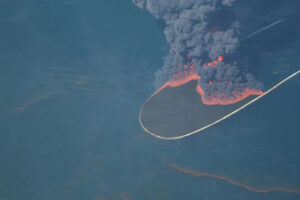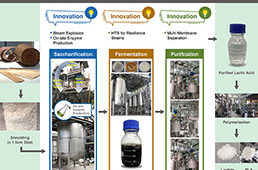By Jim Harper, Senior Product Manager, Elsevier
Safety and risk mitigation are high on the agenda for professionals in the energy, petrochemical, chemicals, and construction industries. Headlines such as the Deepwater Horizon oil spill in 2010, the Fukushima nuclear disaster of 2011, or the Grenfell Tower fire of 2017, serve as bleak reminders of the dire consequences of equipment faults, material misuse, or process failures. But conducting safety evaluations requires more than just asking ‘what if?’ Engineers need to take a systematic approach to identifying risk.
A hazard and operability study (HAZOP) is one way to break risk down into nodes, deviations, and causes, to consider a wider range of potential scenarios. But even with the HAZOP framework, it remains difficult to identify all possible hazards since processes in engineering are complex and understanding the materials requires expertise. Therefore, if engineers are to conduct a strategic and effective safety assessment, they need access to the right data to drive appropriate decisions around prioritization and risk mitigation.
A labyrinth of process and materials data
Completing a risk assessment requires evaluating every process and every material. Missing just a single factor can lead to dire consequences. Convoluted flow paths in equipment make identifying hazards particularly challenging. For example, a process may be high pressure in one stage and low pressure in another, but each of those sections poses a different risk severity. A small leak may be of little consequence in the low-pressure unit but potentially catastrophic in the high-pressure unit. Therefore, having a clear understanding of complex processes is critical to thoroughly monitoring for hazards.

The Deepwater Horizon oil spill was the largest marine oil spill in history, caused by an explosion on the Deepwater Horizon oil rig, located in the Gulf of Mexico.
Risk specialists must also be able to weigh other parameters. These include pressure sources, operating and design conditions, and the connections among systems (such as piping, valves, and couplings). In the event a fault does occur, repercussions must also be considered. This entails reviewing the toxicity or explosive capabilities of materials and the location of the facility, for example, whether a facility is close to residential areas or major roads.
After navigating this information, cultural challenges still stand in the way. Process safety meetings should be properly managed, ensuring that the right amount of people attend, and with the relevant expertise. Gathering the right mix of stakeholders and specialists is essential to achieving the optimal mix of viewpoints to span the many elements of process risk management.
The latest information, from every source
Accurate and complete data is what underlies the entire risk assessment process, and acting on incorrect or outdated documentation can seriously hinder hazard assessment. Researchers and engineers need access to the latest information about their processes and the materials involved, and the ability to compare this to external data, including academic research and previous accident data. This will enable them to conduct the most thorough risk assessment, missing no detail.
For example, take the case of a refinery in Southern Europe producing polyolefin, olefins, and catalysts for PE, PP, and Polybutylene. The risk assessment team created a strategic plan to reduce accidents and used a database purpose-built for the industry to find in-depth information on the correct distribution of gas detectors and the causes and consequences of previous accidents in other companies related to loss of process containment. They were able to access global sources, including content from the American Institute of Chemical Engineers and the Center for Chemical Process Safety. The digital tool enabled the chemical process group to decrease the statistical chance of incidents from a frequency of occurrence of one every 10,000 years to one every 100,000 years. We can see here how valuable it was to be able to pool multiple data sources to conduct a comprehensive assessment.
The industry is changing, but safety is still paramount
As innovation continues at pace across energy, chemicals, and construction, there will be an uptake of new processes and materials. The shift towards sustainability and renewable energy sources will accelerate this and exacerbate the need for safety teams to have access to all the latest information. Despite industry change, process safety will always remain paramount. Digital tools and databases will be a critical part of ensuring that nothing is missed and that engineers can conduct a thorough, strategic hazard assessment.






Tell Us What You Think!